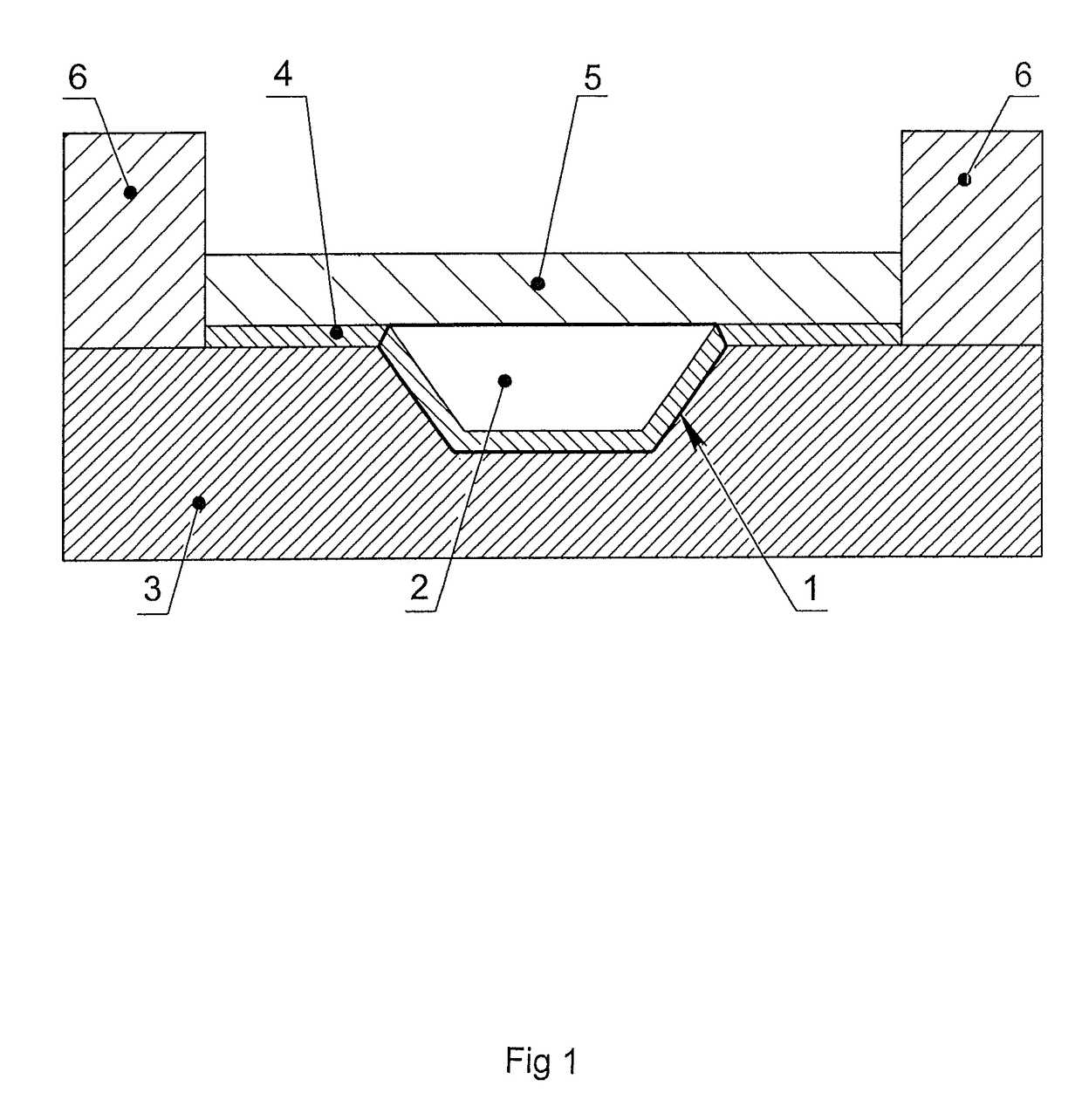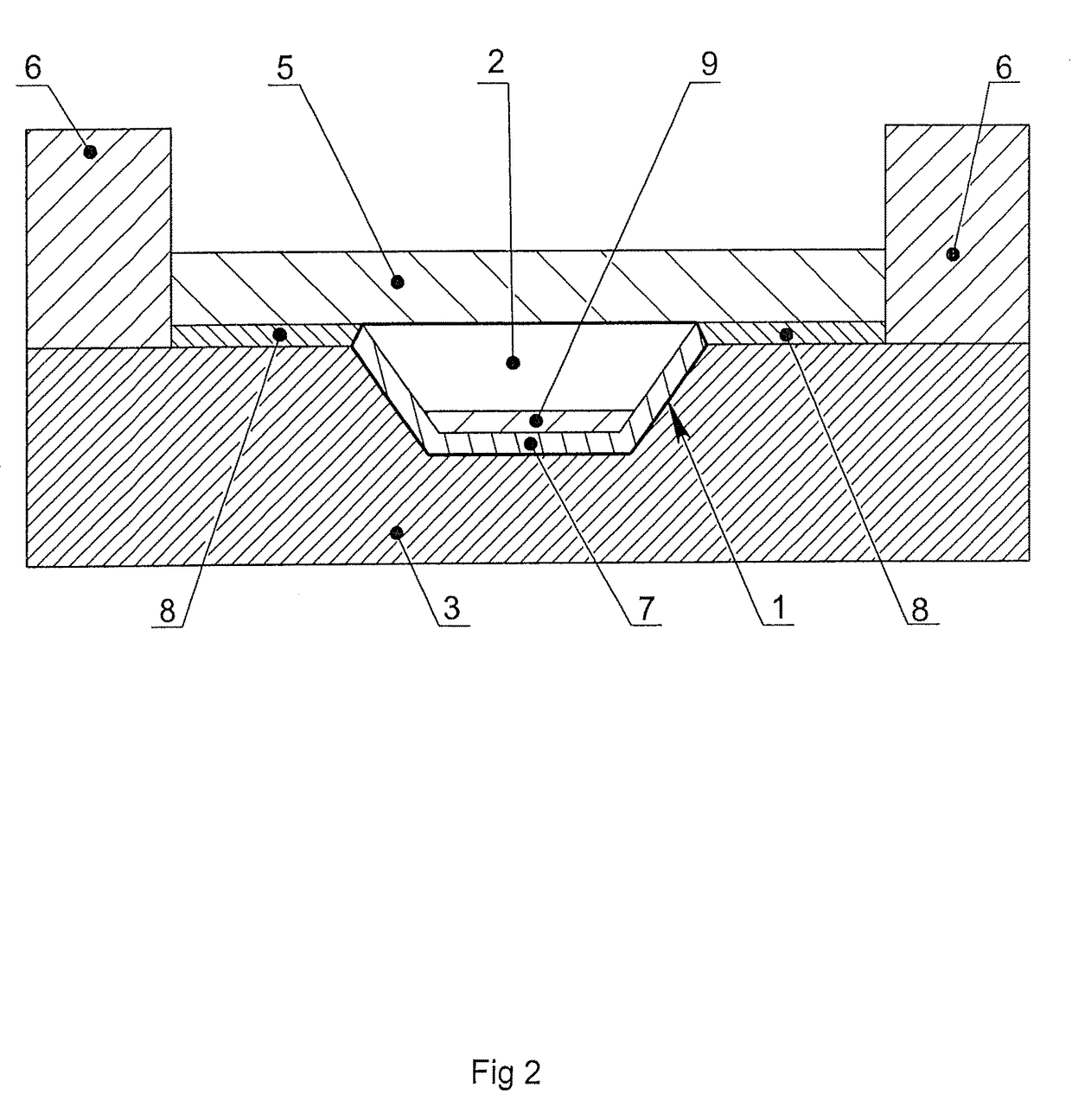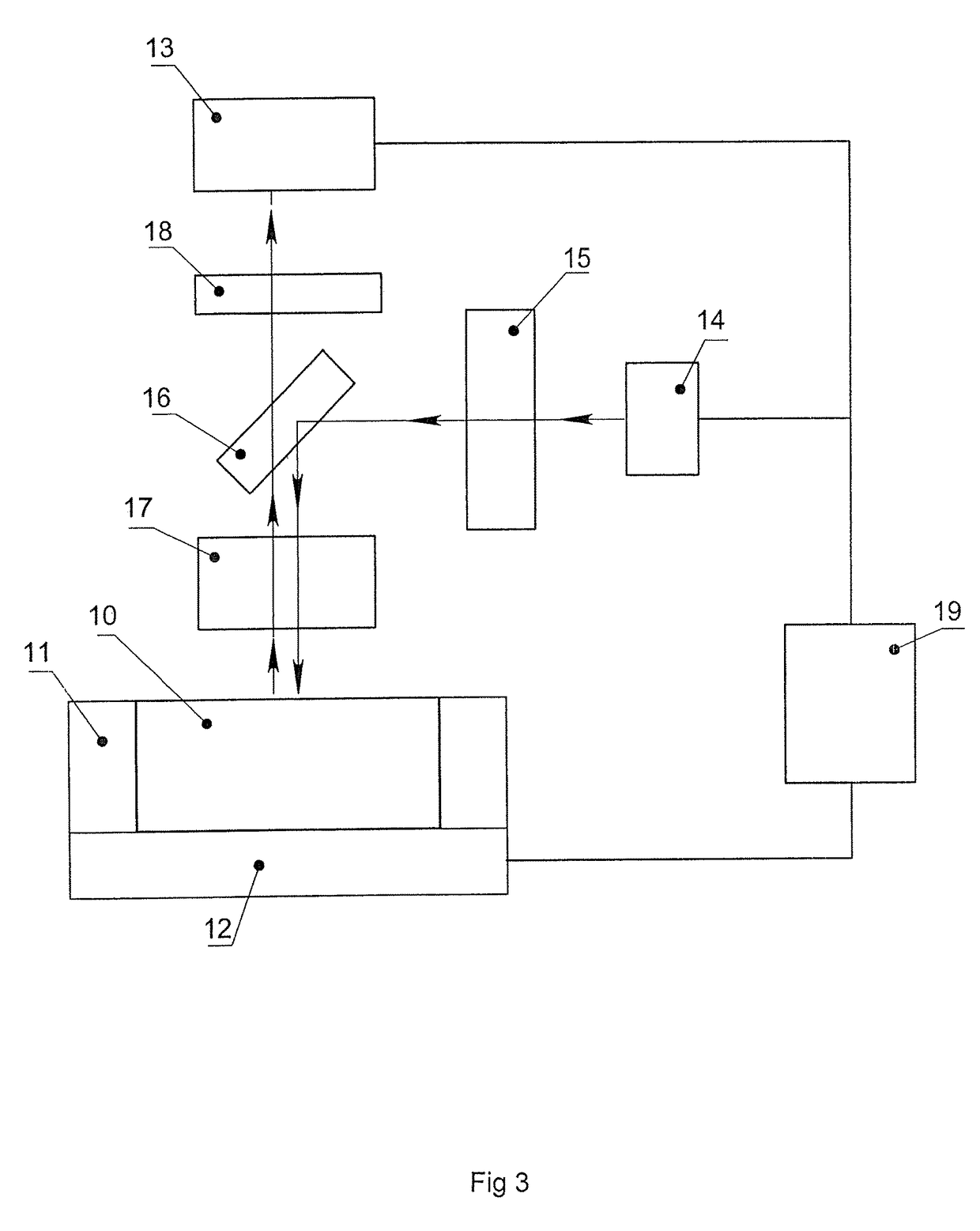Method of nucleic acids analysis by real-time polymerase chain reaction and device for performing the same
a nucleic acid analysis and real-time polymerase chain reaction technology, applied in biochemistry apparatuses, biochemistry apparatus and processes, enzymology/microbiology apparatuses, etc., can solve the problems of increasing throughput, reducing the total pcr analysis time, and high temperature non-uniformity of the sample in the tube, so as to reduce the cost of pcr analysis
- Summary
- Abstract
- Description
- Claims
- Application Information
AI Technical Summary
Benefits of technology
Problems solved by technology
Method used
Image
Examples
example 1
[0079]The microchip containing 16 reaction zones on its surface was manufactured from polished silicon wafers 0.6 mm thick using the photolithography method with subsequent anisotropic wet chemical etching. The dimensions of the heat-conducting substrate were 25×28×0.6 mm. The reaction zones were located on the surface of the microchip as a matrix of 4×4. Every reaction zone had a shape of a frustum of a pyramid, with the dimensions of the upper base of 2×2, lower base of 1.7×1.7 mm and the depth of 0.4 mm. The whole area of the silicon substrate was covered by silicon dioxide SiO2 by thermochemical oxidation. The silicon substrate covered with the silicon dioxide was cleaned in a mixture of concentrated sulfuric acid and hydrogen peroxide (3:1) during 20 minutes. After thorough washing with demi deionized water and drying the surface of the silicon substrate outside the reaction zones was treated with polymethylmethoxysiloxane “Penta-111” (Penta-North, Russia). After polymerization...
example 2
[0094]The microchip and the device according to the invention were similar to those described in example 1.
[0095]The solutions prepared for the rt-PCR were similar to example 1. Preparation of the working PCR mixture and its introduction in the reaction zones of the microchip were performed in the way similar to example 1.
[0096]Thermocycling was performed in the temperature conditions with reduced duration of the stages of denaturation, primer annealing and elongation: polymerase activation at 94° C. during 120 s (1 cycle), DNA denaturation at 94° C. during 3 s, primer annealing at 58° C. during 3 s, elongation of amplicons and fluorescence signal pickup at 72° C. during 8 s (45 cycles).
[0097]The result of the example is shown in FIG. 5. The figure shows that the samples containing the DNA under investigation exhibit increase in the fluorescence signals while the samples that do not contain this type of DNA do not show the increase of the fluorescence signal. Comparison between the ...
example 3
[0099]The microchip and the device according to the invention were similar to those described in example 1.
[0100]The following solutions were prepared for the rt-PCR:
[0101]1) amplification mixture containing 80 mM Tris-HCl (pH=8.0), 0.1% Triton X-100, 24 mM (NH4)2SO4, 0.5 mM EDTA, deoxyonucleoside triphosphates dATP, dTTP, dGTP, dCTP of 500 μM each, 0.16% D-glucose, 1.6% inuline, 8% D-mannitol (Sigma, USA), OligoTaq DNA-polymerase 0.1 U / μl (Promega, USA); forward and reverse primers in the concentration of 0.5 μM, fluorescently labeled oligonucleotide probe in the concentration of 0.2 μM for detection of the DNA of Escherichia coli, strain C600, gene fragment 16S pRNA, sterile deionized water.
[0102]2) sample solution containing 104 DNA of Escherichia coli copies in 1 μl, strain C600, in sterile deionized water (sample K+) or sterile deionized water (sample K−) in the solution containing 5 mM MgCl2, 10 mM Tris-HCl (pH=8.0), 0.1% Triton X-100, 5% glycerol (Sigma, USA) and sterile deio...
PUM
| Property | Measurement | Unit |
|---|---|---|
| Fraction | aaaaa | aaaaa |
| Time | aaaaa | aaaaa |
| Nanoscale particle size | aaaaa | aaaaa |
Abstract
Description
Claims
Application Information
 Login to View More
Login to View More - R&D
- Intellectual Property
- Life Sciences
- Materials
- Tech Scout
- Unparalleled Data Quality
- Higher Quality Content
- 60% Fewer Hallucinations
Browse by: Latest US Patents, China's latest patents, Technical Efficacy Thesaurus, Application Domain, Technology Topic, Popular Technical Reports.
© 2025 PatSnap. All rights reserved.Legal|Privacy policy|Modern Slavery Act Transparency Statement|Sitemap|About US| Contact US: help@patsnap.com



